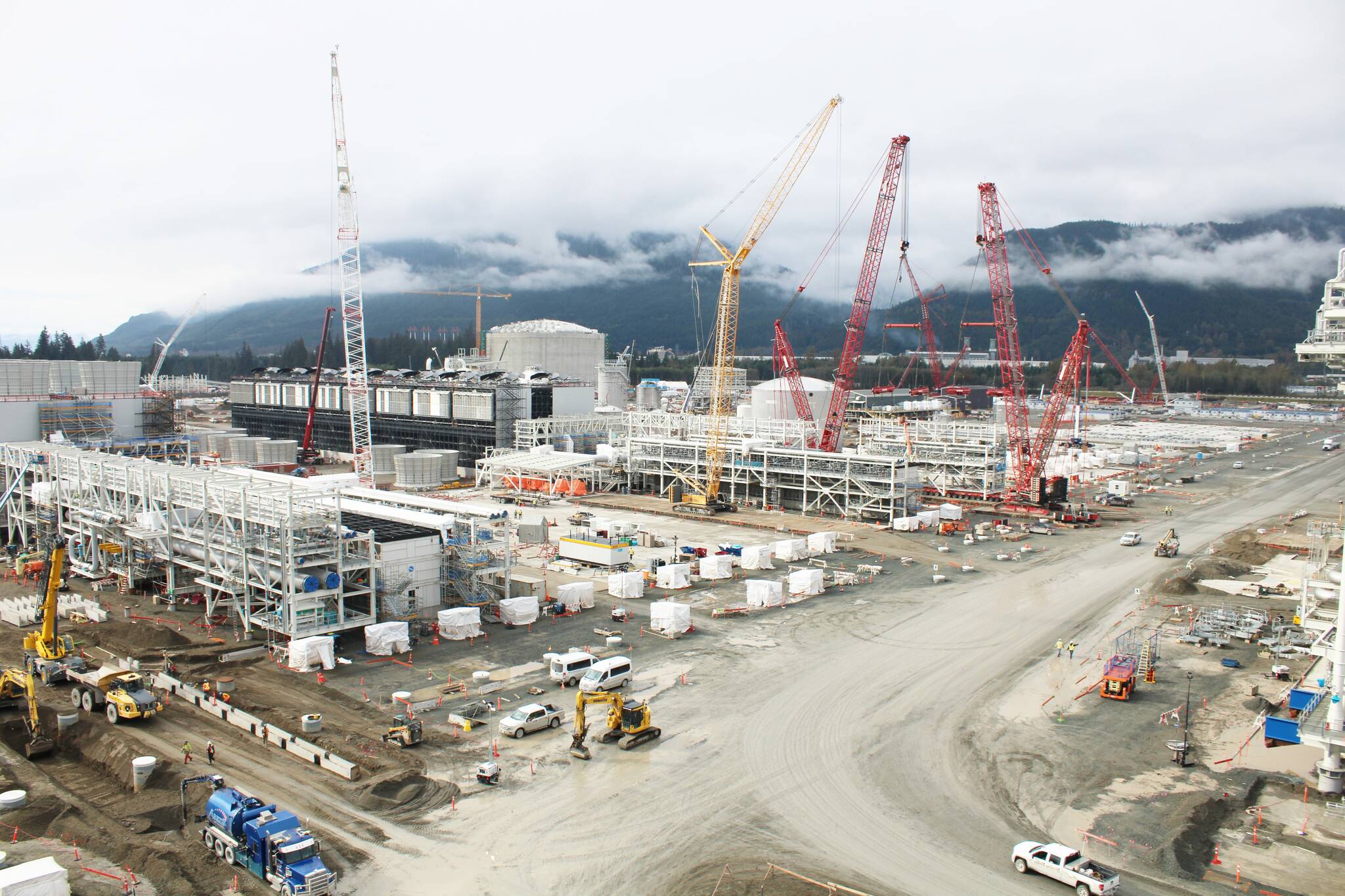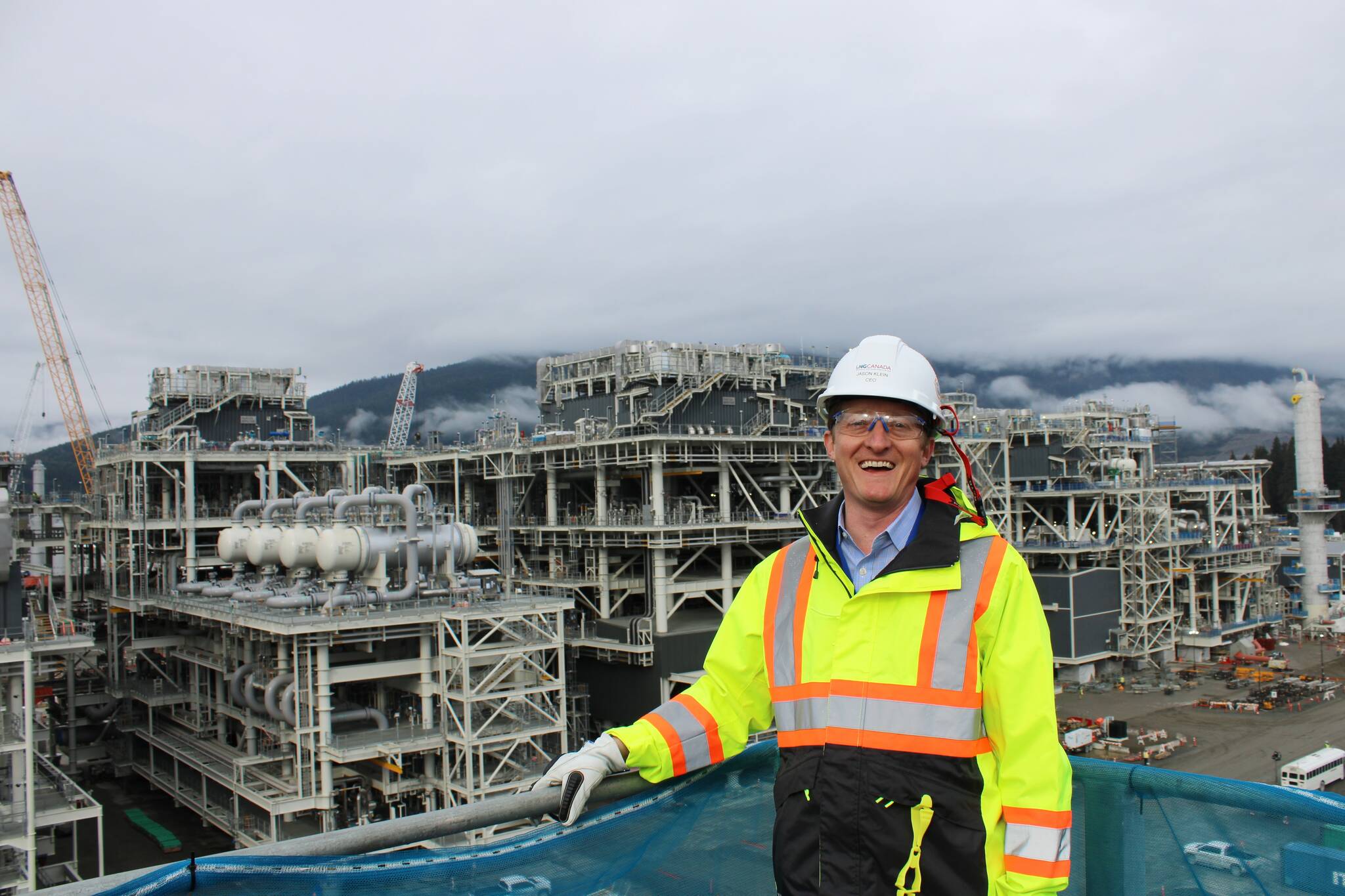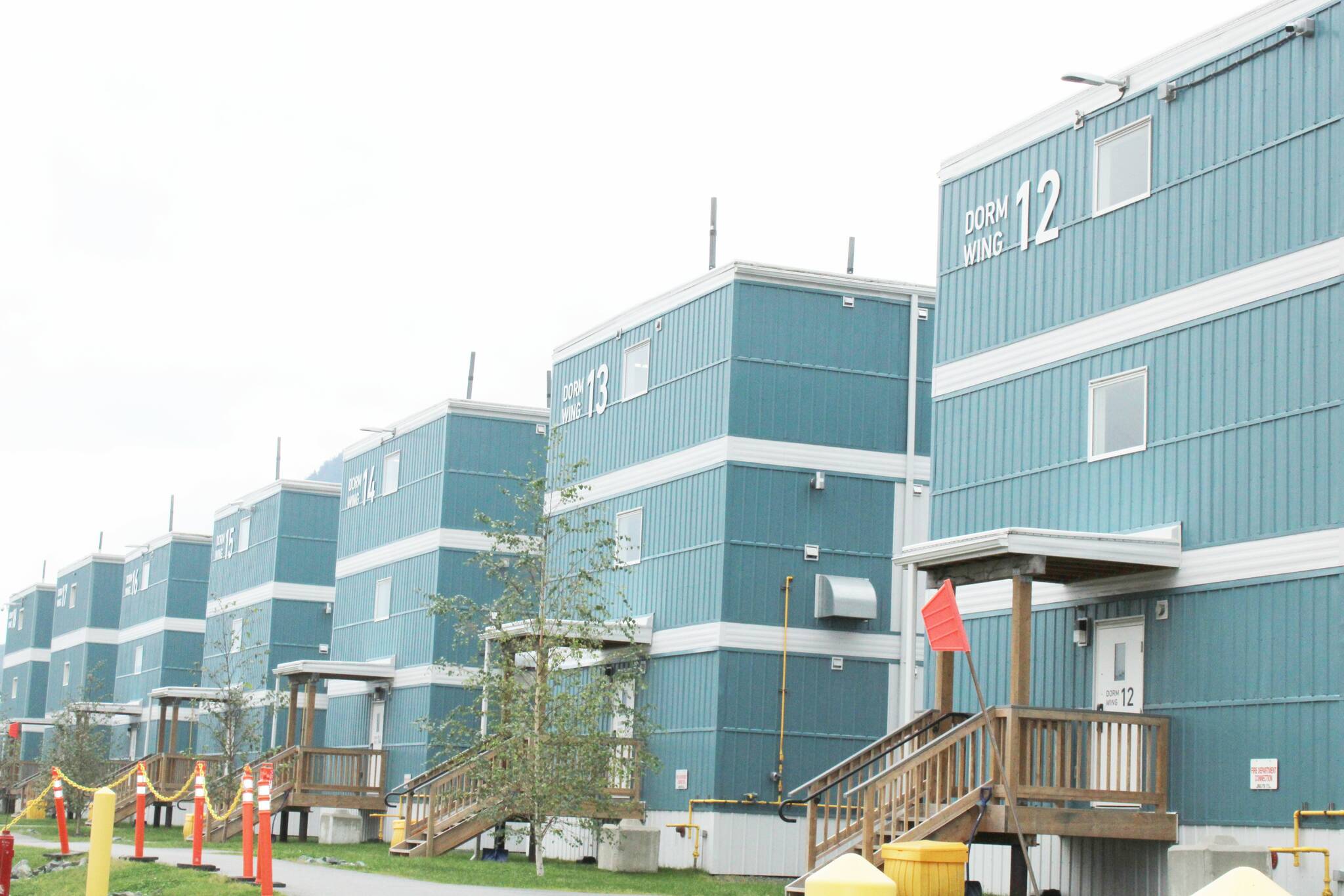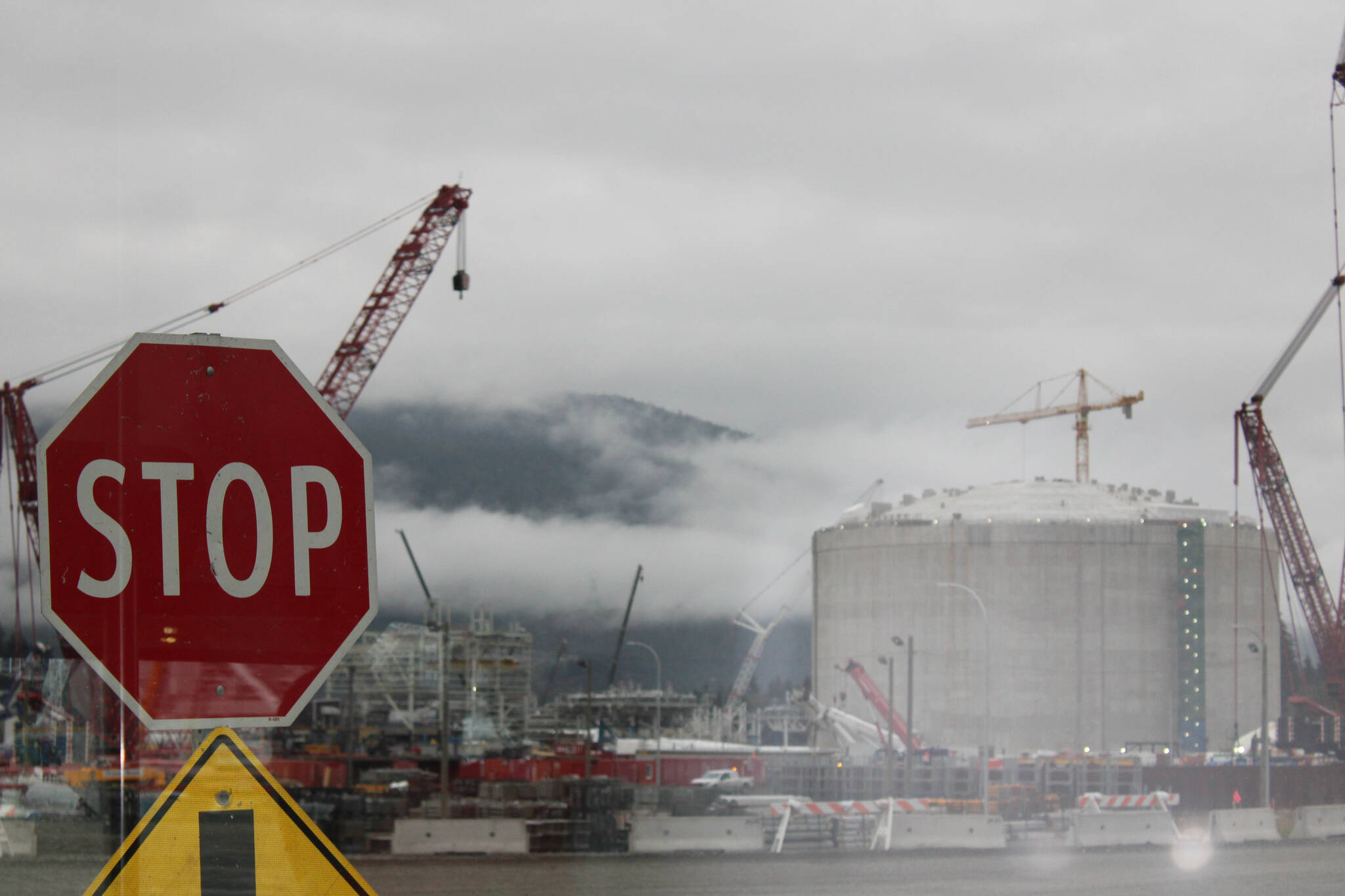LNG Canada is ramping up construction at its Kitimat liquefied natural gas (LNG) terminal with the workforce expected to peak at 7,500 people next year, newly-minted CEO Jason Klein said at a news conference and tour of the site on Sept. 28.
With the first phase of the LNG project now 70 per cent complete and the Coastal GasLink (CGL) pipeline 75 per cent complete, Klein, who was appointed CEO in April, said there is plenty of reason to be optimistic despite pandemic setbacks and cost of the pipeline doubling.
“The pipeline has had almost a 100 per cent cost overrun,” Klein said. “That’s not our experience here.
“We had contingencies to manage uncertainties… Clearly the cost overrun on CGL was not welcome news. We now have a new agreement in place.”
Klein showed off significant progress and LNG Canada construction manager Vince Kenny said the work is “pretty much on track with where we want to be.”
READ MORE: LNG Canada’s new module arrives in Kitimat
Last time reporters were on site three years ago the company was about to commence concrete foundations, and worker accommodations were just being constructed. Now they are focused on “building up,” Klein said.
Once complete, the terminal for the liquefaction, storage, and loading of liquefied natural gas will export LNG produced by the project’s partners in the Montney Formation gas fields near Dawson Creek.
Without giving a date as to when the project will be complete and ready to start exporting natural gas, primarily to Asian markets, Klein said phase 1 is on track to be operational mid-decade.
READ MORE: Phase one of the LNG Canada piling project in Kitimat is complete
The company also wouldn’t give a start date for phase 2 of the project, which would double LNG production.
Klein said they don’t publish the budget and LNG Canada has neither confirmed nor denied estimated project costs of between $17 billion and $18 billion for the Kitimat terminal. The total budget for the LNG Canada project, including CGL and upstream assets, has been estimated at $40 billion, also unconfirmed by LNG.
The CEO pointed to $3.8 billion in contracts and procurement with B.C. companies, $3 billion of that awarded locally and with First Nations.
READ MORE: LNG Canada begins search for employees
During peak construction the number of projected LNG workers will rival the population of Kitimat — 8,236 people as of the 2021 census. Klein stressed that workers will not all be on site at the same time.
Klein said LNG Canada will try to limit impact of the influx of mostly ‘fly-in’ workers to the community but won’t be taking any new steps to limit illicit drugs and criminality.
Workers are hired and background checks are conducted by LNG Canada’s contractors, but there are restrictions on what can be done in terms of background checks.
“It’s more of the same. I mean we’ll keep doing what we’ve been doing. Which has been pretty successful. Of course, there will be incidents and we’ll address them when they happen,” Klein said.
“We talk a lot about a respectful workplace.”
READ MORE: Background checks at LNG Canada project concern MMIWG activists
Part of that strategy is to keep workers mostly at the on-site Cedar Valley Lodge accommodations, which feature a resto-bar, convenience store, the only Starbucks in Kitimat, and activities ranging from mini-golf to a climbing wall and basketball court. Klein lauded leisure facilities and workout facilities which are “probably the best in this part of B.C.”, saying they’re making it “really comfortable and welcoming for people to work here.”
There are alcoholics and narcotics anonymous groups, men’s groups, women’s groups, religious groups and mental health counselors on site.
“There are K-9 searches, we, obviously, if there is any criminality, address that,” Klein said.
“More broadly we try to address mental health and addiction issues which is a problem across society. We try to address the underlying problem and then, of course, we’re very closely connected with the District of Kitimat and the RCMP if there are problems to address them.”
READ MORE: City frustrated with LNG Canada, province around social impact management
New workers go through Indigenous culture discussion and awareness sessions as a grounding before they even begin safety training, Klein said.
“It’s all about respecting Kitimat, respecting our community and respecting each other.”
LNG Canada committed from the beginning to minimizing impact in the Kitimat and Terrace communities, Klein said. In particular around infrastructure. “That’s one of the reasons we have a facility here and the reason we have two health clinics here on site so we don’t put a burden on the healthcare system.”
For much of the COVID period, Klein said people were not allowed to leave the camp but workers are now free to do as they please outside working hours, and spend money at local businesses.
“There is a portion of the community that is mainly focused on minimizing the impact on them and then there’s a portion of the community, the business owners, who are looking forward to the opportunity to make more revenue. And there’s a balance to be had there.”
While the facility will increase emissions locally, Klein argued Canada’s relatively clean natural gas industry will offset global emissions and reduce reliance on coal in Asia amid more demand for American LNG in Europe.
“On net zero, our focus is on reducing the environmental impact here in Kitimat,” he said, adding that First Nations have different priorities, ranging from employment to concerns about response to any potential spills of gas into the ocean.
“We’ve tried to meet every First Nation where they want to be met and have a discussion about impact mitigation that’s meaningful to them and that’s an ongoing dialogue.”
READ MORE: Indigenous group opposes Liberal government emissions cap policy
ALSO READ: Coastal LNG project offers much potential, says Nisga’a Lisims president
Do you have a comment about this story? email:
michael.willcock@terracestandard.com
Business and IndustrialCoastal GasLinklng canada







